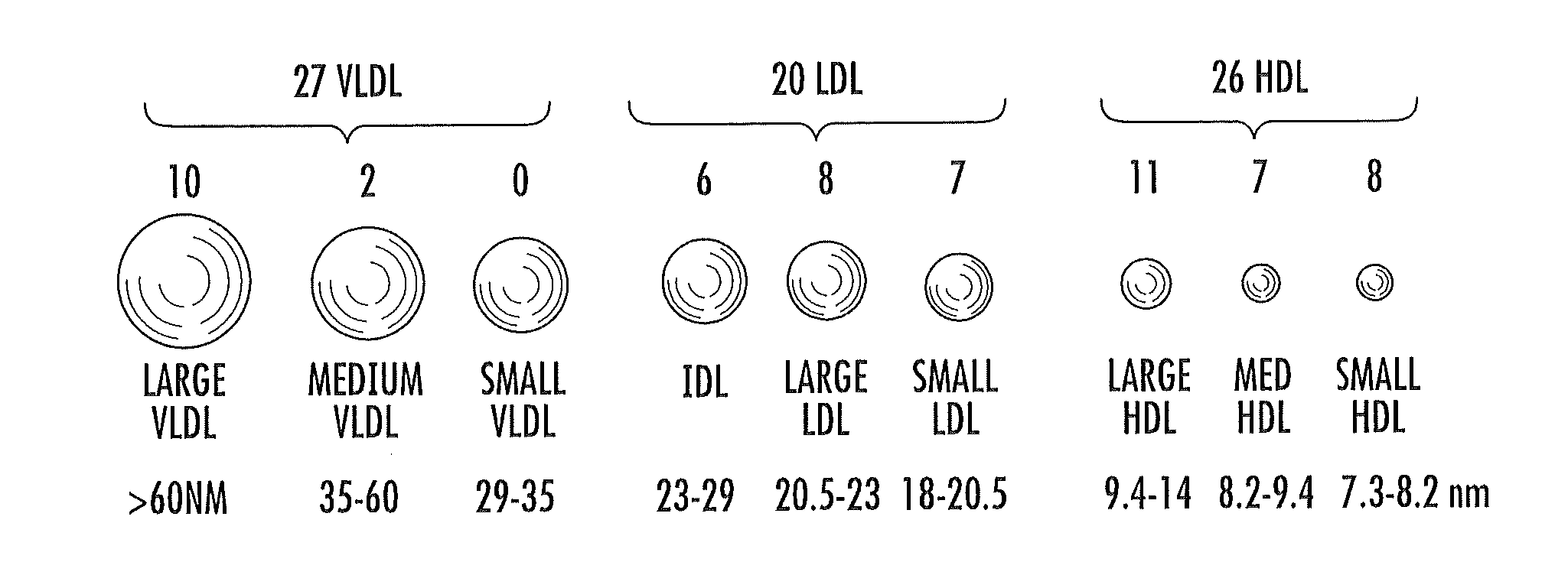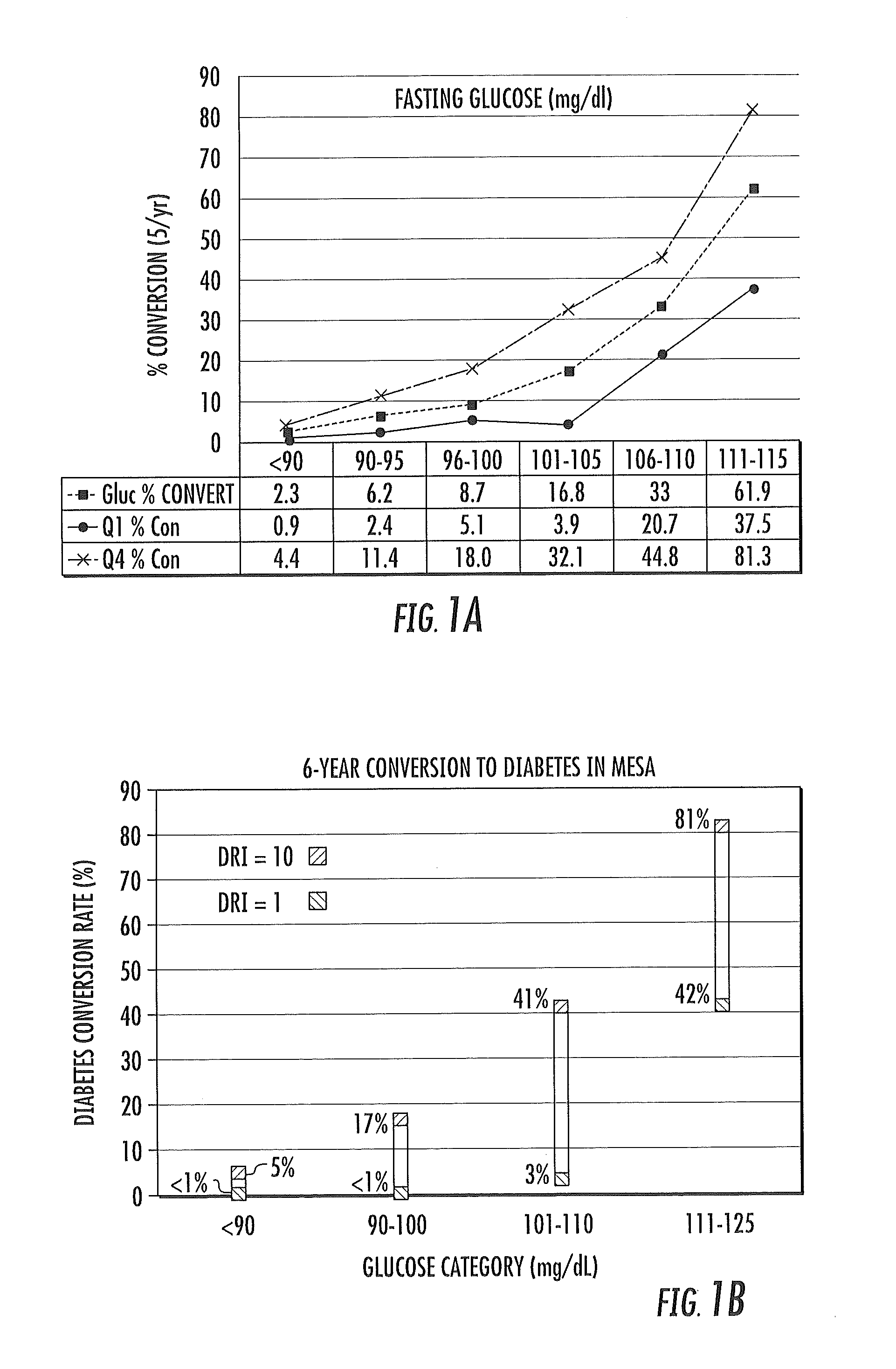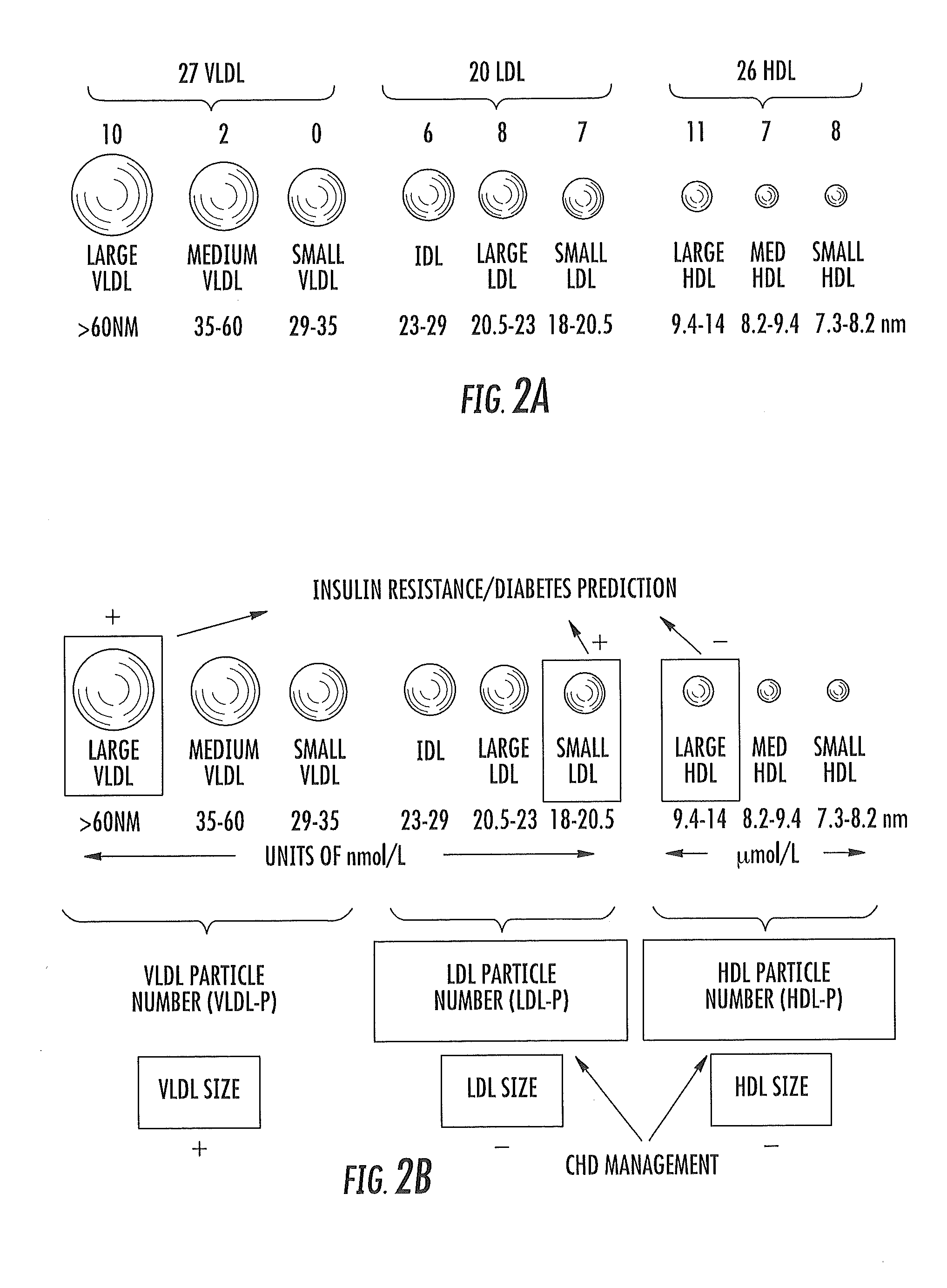Multi-parameter diabetes risk evaluations
a risk evaluation and multi-parameter technology, applied in the field of in vitro biosample analysis, can solve the problems of inability to maintain insulin hypersecretion, laborious and time-consuming direct and accurate methods for assessing insulin resistance, and impractical clinical applications, etc., to achieve the effect of facilitating identification
- Summary
- Abstract
- Description
- Claims
- Application Information
AI Technical Summary
Benefits of technology
Problems solved by technology
Method used
Image
Examples
example 1
[0311]A Diabetes Risk index (DRI) was developed using MESA that uses only information derived from a single nuclear magnetic resonance (NMR) spectrum of a fasting plasma sample. The DRI can identify the highest-risk patients who are likely to benefit the most from intervention. This information includes glucose and lipoprotein subclass / size parameters previously linked to insulin resistance, as well as Valine, and GlycA. FIG. 1A was generated using NMR spectra collected at baseline from the Multi-Ethnic Study of Atherosclerosis (MESA). The MESA dataset consisted of 3185 participants, 280 of whom developed diabetes during 5 years of follow-up. FIG. 1A presents the diabetes conversion rates of subjects within 6 glucose subgroups (dotted line), and those for subjects in the upper and lower quartile of DRI within each glucose stratum. As shown, the risk of developing diabetes at any given glucose level is substantially greater for DRI in Q4 vs Q1. The NMR-based diabetes risk score can e...
example 2
[0316]The DRI index model can employ lipoproteins, Valine and GlycA as seven different parameters (including 5 lipoprotein parameters): VLDL size, large+medium VLDL particle number, total HDL and medium HDL subclass particle number, Valine, and GlycA.
[0317]Another study of the MESA dataset consisted of 4985 non-diabetic participants, 411 of whom developed diabetes during 6 years of follow-up. The MESA data restricted to the 1832 individuals with intermediate glucose 90-110 mg / dL, 198 of whom converted to diabetes. Conversion rates by quintile of a baseline DRI index and the four component parts of the DRI model: lipoproteins, GlycA, Valine, and glucose were assessed. Relative rates for those in the extreme quintiles were 2.2 for lipoproteins, 1.9 for GlycA, 1.7 for Valine, 6.3 for glucose, and 10.7 for DRI (2.2% in Q1; 23.0% in Q5).
[0318]The results indicate that the DRI score, without any additional clinical information, can identify among patients with intermediate glucose levels ...
example 3
MESA and IRAS Comparison
[0320]FIG. 32 is a table of data that shows the performance of DRI (with glucose) in the IRAS dataset, the MESA dataset, and IRAS dataset (using the glucose subgroups from MESA). When IRAS samples were collected, the definitions of pre-diabetes and diabetes were different than that of MESA, which occurred years later.
[0321]FIG. 33 shows the performance of DRI (without glucose) in the same dataset criteria as FIG. 32. The highlighted values show the difference between the 5th quintile and the first quintile.
[0322]IRAS:
[0323]Observational study of middle-aged Hispanic, non-Hispanic white, and African-American men and women. Blood samples obtained 1992-1994. NMR analyses of thawed-refrozen heparin plasma performed in 2001 on Varian instruments (preceding Profilers or current generation NMR analyzers used by LipoScience, Inc., Raleigh, N.C.) using WET water suppression. NMR dataset population was 46% normoglycemic (old definition, glucose <110 mg / dL), 22% impaire...
PUM
 Login to View More
Login to View More Abstract
Description
Claims
Application Information
 Login to View More
Login to View More - R&D
- Intellectual Property
- Life Sciences
- Materials
- Tech Scout
- Unparalleled Data Quality
- Higher Quality Content
- 60% Fewer Hallucinations
Browse by: Latest US Patents, China's latest patents, Technical Efficacy Thesaurus, Application Domain, Technology Topic, Popular Technical Reports.
© 2025 PatSnap. All rights reserved.Legal|Privacy policy|Modern Slavery Act Transparency Statement|Sitemap|About US| Contact US: help@patsnap.com



